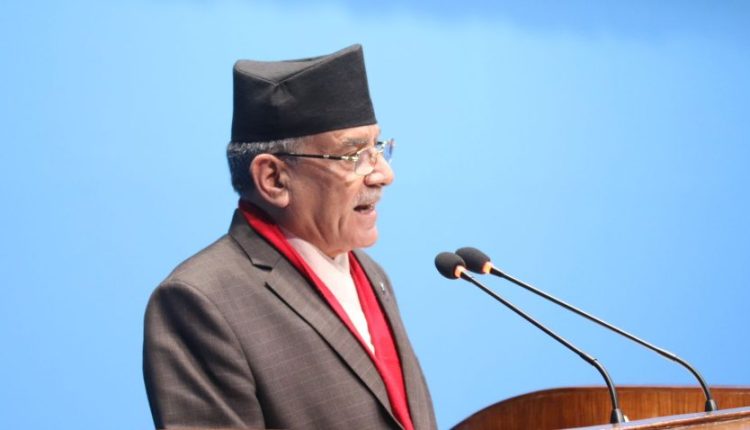Nepal Cabinet Reshuffled for Seventh Time; two deputy Prime Ministers, Purna Bahadur Khadka from Nepali Congress and Narayan Kaji Shrestha from CPN-Maoist Centre
The new Cabinet has two deputy Prime Ministers, Purna Bahadur Khadka from Nepali Congress and Narayan Kaji Shrestha from CPN-Maoist Centre, 13 ministers, and one minister of State
Nepal’s Prime Minister Pushpakamal Dahal “Prachanda” on Friday expanded his Cabinet for the third time in as many months by inducting 11 new ministers amidst last-minute bargaining over portfolios among partners of the 10-party ruling alliance.
President Ramchandra Poudel administered the oath of office and secrecy to the newly appointed ministers at Sheetal Niwas, in the presence of “Prachanda”.
The new Cabinet has two deputy Prime Ministers, Purna Bahadur Khadka from Nepali Congress and Narayan Kaji Shrestha from CPN-Maoist Centre, 13 ministers, and one minister of State.
Khadka is the deputy prime minister with the portfolio of the Defence Ministry while Shrestha is the deputy prime minister administering the Home Ministry.
There are four ministers from the Nepali Congress party, including Finance Minister Prakash Sharan Mahat, Minister for Industry and Commerce Ramesh Rijal, and Minister for Urban Development Sita Gurung, besides Khadka.
Two ministers are from CPN-Unified Centre, including Veduram Bhushal, the Minister for Agriculture and Livestock Development, and Prakash Jwala, the Minister for Physical Infrastructure and Transport.
The CPN-Maoist Centre has got seven ministries, including the post of prime minister and a minister of state.
Despite the seventh reshuffling, the Cabinet is yet to get into full shape.
Prachanda is still looking after the foreign ministry, ministries of law, justice and parliamentary affairs; forest and environment; health and population and the ministry of youth and sports.
Nepal’s 10-party ruling alliance on Thursday failed to reach a consensus on the power-sharing deal, causing yet another delay in the expansion of the Cabinet.
Top leaders held meetings at the Prime Minister’s official residence here at Baluwatar to reach an agreement on the distribution of ministries among various political parties.
Power sharing and the distribution of ministerial portfolios were the major bottlenecks among the members of the ruling alliance as the demand for Cabinet posts was exceeding the number of ministries available, officials said.
Before the expansion, Prachanda was overburdened with about 16 ministerial portfolios, including the ministries of Home, Finance, Foreign, Industry and Commerce, Science and Technology, and Agriculture.
There were only six Cabinet ministers, including the Prime Minister and one minister of state in the Prachanda-led government before Friday’s expansion, as ministers from CPN-UML, Rastriya Prajatantra Party, and Rashtriya Swotantra Party had resigned from the posts following the break up of the seven-party coalition.
Prachanda, who wanted to expand his cabinet immediately after the confidence vote, could not do so as dividing the cabinet portfolios among alliance partners proved challenging due to rival claims on ministries.
According to the constitutional provision, there cannot be more than 25 ministers in the Cabinet, including the prime minister.
This provision was incorporated in the Constitution to avoid the recurrence of past experiences when the prime minister would form a jumbo Cabinet to please all the coalition partners.
Prachanda was sworn in as Nepal’s Prime Minister on December 26 last year.


Comments are closed.